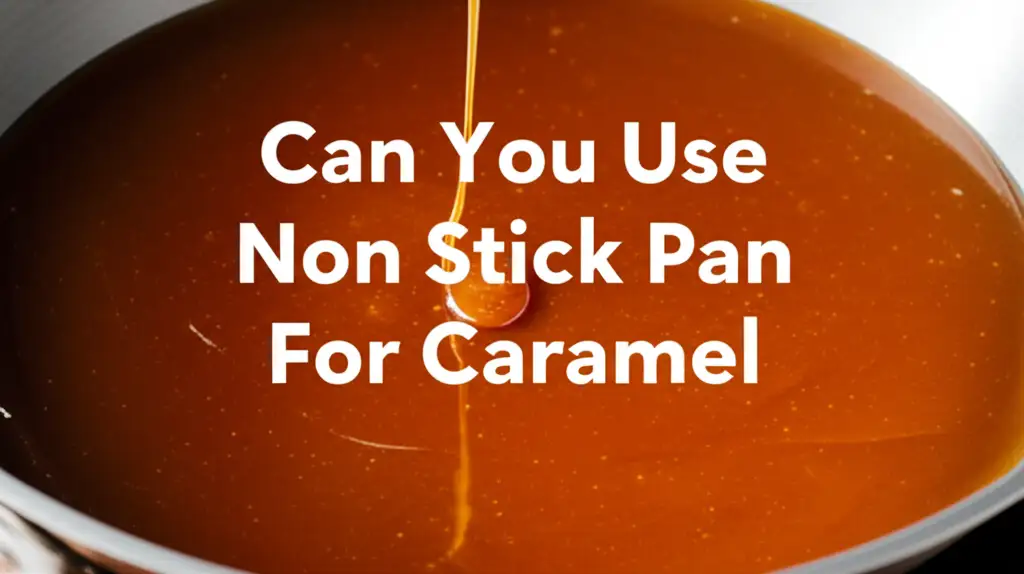· Todd Martin · Cooking Tips · 13 min read
How To Clean Catfish Nuggets

How To Clean Catfish Nuggets Like a Pro
Imagine preparing a delicious catfish dinner, only to find an unwanted “muddy” taste or slimy texture. It is a common problem for many home cooks. Proper cleaning of catfish nuggets is crucial for a great meal. This process removes undesirable flavors and textures.
In this guide, I will show you how to clean catfish nuggets effectively. You will learn about essential tools and simple step-by-step methods. We will cover techniques for removing slime and neutralizing strong flavors. By the end, you will have fresh, flavorful catfish ready for cooking.
Takeaway
- Rinse catfish thoroughly under cold water to remove initial debris.
- Use a salt rub or salt bath to eliminate slime and tighten the flesh.
- Soak nuggets in acidic solutions like lemon water, vinegar, or milk to neutralize “muddy” flavors.
- Pat catfish completely dry before cooking to ensure a crispy texture.
To properly clean catfish nuggets, rinse them under cold water, then rub them with coarse salt to remove slime. Follow this with a soak in an acidic solution like lemon water or diluted vinegar for 20-30 minutes to neutralize any muddy taste. Finally, rinse well and pat dry before cooking.
Why Proper Cleaning Matters for Catfish Nuggets
Cleaning catfish nuggets before cooking is a vital step. It makes a big difference in the taste and texture of your final dish. Many people skip this, but it can lead to disappointment. Uncleaned catfish often has a strong, earthy, or “muddy” flavor. It also might feel slimy to the touch.
This is because catfish are bottom feeders. They absorb flavors from their environment. Proper cleaning helps remove these unpleasant elements. It ensures your catfish nuggets are delicious and enjoyable.
Removing Slimy Residue
Catfish naturally have a layer of slime on their skin or flesh, even on nuggets. This slime can make the fish feel unpleasant to handle. It can also affect the texture when cooked. A simple rinse is not enough to get rid of it completely.
We use specific methods to remove this residue. This makes the catfish cleaner and firmer. It also prevents any off-putting sliminess in your dish.
Eliminating Off-Flavors
The “muddy” taste in catfish is a common complaint. It comes from compounds absorbed from their diet and habitat. These compounds are harmless but can spoil the flavor of your meal. Cleaning helps to neutralize or remove these strong tastes.
By using simple kitchen ingredients, you can transform the flavor. This process leaves you with clean-tasting catfish. It is a small effort for a big reward in flavor.
Essential Tools and Ingredients for Cleaning Catfish
Before you start cleaning your catfish nuggets, gather your supplies. Having everything ready makes the process smooth and efficient. You probably have most of these items in your kitchen already. A clean workspace is important when handling any food.
You need basic kitchen tools and some common ingredients. These items will help you properly prepare the catfish. They are key to removing unwanted elements and ensuring good flavor.
- Large Mixing Bowl: For soaking and rinsing the catfish nuggets.
- Colander: To drain water and rinse the nuggets thoroughly.
- Sharp Knife and Cutting Board: For any trimming or portioning, if needed. Ensure your cutting board is clean; you can learn how to clean your baking steel or any large kitchen surface after preparing food.
- Coarse Salt (Kosher or Sea Salt): Essential for scrubbing away slime.
- Lemon or Vinegar: Acids help to neutralize odors and strong flavors. White vinegar is a good option; consider how it’s used in general cleaning, such as learning how to clean your dishwasher with vinegar.
- Paper Towels or Clean Cloths: For patting the fish dry.
- Gloves (Optional): If you prefer not to touch the raw fish directly.
Choosing the Right Salt for Cleaning
The type of salt you use matters for cleaning catfish. Coarse salt, like kosher salt or sea salt, is best. Its larger crystals provide a gentle abrasive action. This helps to rub off the slime effectively. Fine table salt can dissolve too quickly and might not be as effective.
Avoid using iodized table salt for large-scale cleaning. It can sometimes impart a metallic taste to fish. Stick to coarse, non-iodized salt for the best results.
The Role of Acidity (Lemon/Vinegar)
Acidic ingredients play a crucial role in cleaning catfish. Lemon juice and vinegar are common choices. They help to break down the compounds that cause “muddy” flavors. The acid neutralizes these strong odors.
Soaking the catfish in a diluted acidic solution also helps firm up the flesh. This can improve the texture of your cooked nuggets. It is a simple step that adds a lot of value.
Step-by-Step Guide to Cleaning Raw Catfish Nuggets
Cleaning catfish nuggets is a straightforward process. Follow these steps carefully for the best results. Each step builds on the last to ensure a clean and fresh product. It does not take long, but it makes a big difference.
I find that working methodically helps. This ensures you do not miss any part of the process. Your efforts will be rewarded with better-tasting catfish.
Initial Rinse and Inspection
First, place your catfish nuggets in a colander. Rinse them thoroughly under cold running water. This washes away any loose debris or surface impurities. Make sure to get all sides of each nugget.
While rinsing, inspect each piece. Look for any remaining bits of skin, blood clots, or dark spots. Trim these away with your sharp knife if necessary. Ensuring your kitchen tools are clean is essential, much like ensuring the bottom of your pan is clean before cooking.
The Salt Bath Method
This step is key for slime removal and firming the flesh.
- Prepare the Salt: Place the rinsed catfish nuggets in your large mixing bowl. Sprinkle a generous amount of coarse salt over them. I usually use about 2-3 tablespoons for a pound of nuggets.
- Rub and Agitate: Use your hands to gently rub the salt into each nugget. Massage the fish for 2-3 minutes. You will notice the salt drawing out more slime. The nuggets might feel firmer.
- Rinse Thoroughly: Transfer the salted nuggets back to the colander. Rinse them again under cold running water. Continue rinsing until all the salt and slime are gone. The water should run clear.
Acidic Soak for Flavor Neutralization
Now, it’s time to tackle those earthy flavors.
- Prepare the Solution: In your clean mixing bowl, prepare an acidic solution. You can use:
- Lemon Water: Mix the juice of one large lemon with 4 cups of cold water.
- Vinegar Solution: Mix 1/4 cup of white vinegar with 4 cups of cold water. Vinegar is a strong cleaner, useful in many situations, for example, how to clean glass with vinegar.
- Milk or Buttermilk: You can simply use 2-3 cups of milk or buttermilk straight.
- Soak the Catfish: Place the salt-cleaned catfish nuggets into the acidic solution. Make sure they are fully submerged.
- Soak Time: Let the nuggets soak for 20-30 minutes in the refrigerator. Do not soak for too long, or the fish can start to cook slightly.
- Final Rinse: After soaking, remove the nuggets from the solution. Give them a final, thorough rinse under cold running water. This removes any lingering acidic taste or milk residue.
Addressing Common Issues: Sliminess and “Muddy” Taste
Catfish sometimes present challenges that can deter even seasoned cooks. Two of the most frequent complaints are excessive sliminess and a distinct “muddy” taste. These issues are fixable with proper cleaning techniques. Understanding why they occur helps in addressing them effectively. My goal is always to achieve a clean, appealing flavor and texture.
Ignoring these issues means you might not fully enjoy your meal. Taking a few extra steps can transform your cooking experience. It is about making the most of your ingredients.
Battling Catfish Slime
The slimy coating on catfish is a natural protective layer. It helps the fish glide through water. When you handle raw catfish, this slime becomes apparent. It can feel unpleasant and, if not removed, might carry into your cooked dish. This leads to a rubbery or unappetizing texture.
The best defense against slime is a good salt rub. The coarse salt acts as an exfoliant, pulling the slime off the fish. It also helps to firm up the flesh, giving it a better texture after cooking. Remember to rinse very well after the salt treatment.
Neutralizing Earthy Flavors
The “muddy” or earthy taste in catfish comes from compounds called geosmin and methylisoborneol. These are absorbed by the fish from algae and bacteria in their environment. Not all catfish will have this taste, but many do, especially wild-caught ones. This is why proper treatment is important.
Soaking the catfish in an acidic liquid is the most effective way to neutralize these compounds. Acids like lemon juice or vinegar break down the molecules responsible for the off-flavor. Milk or buttermilk works differently; the casein proteins bind to the compounds, pulling them from the fish. Both methods significantly improve the taste. If you encounter tough stains in your kitchen after preparation, like grease stains, remember that similar principles of using the right cleaner apply.
Marinating for Enhanced Flavor and Odor Removal
Beyond basic cleaning, marinating your catfish nuggets can elevate their flavor profile. It also serves as an extra step for odor removal. Marinades infuse the fish with desirable tastes. They further tenderize the flesh, making the cooked nuggets even more enjoyable. This step is optional but highly recommended for superior results.
I always consider marinating as a way to add my personal touch. It lets you get creative with flavors. Plus, it gives the catfish an even fresher taste.
Milk/Buttermilk Soak Benefits
Soaking catfish in milk or buttermilk is a time-honored tradition. This method is particularly effective at removing residual “muddy” flavors. The proteins in milk, especially casein, are believed to bind with and draw out the undesirable compounds. It also helps to tenderize the fish slightly.
Soak your cleaned nuggets in enough milk or buttermilk to cover them. Place the bowl in the refrigerator for at least an hour, or up to four hours. Afterward, rinse the nuggets well under cold water before patting them dry. This ensures no milky residue remains.
Citrus and Acidic Marinades
Citrus juices, like lemon or lime, and vinegars (white or apple cider) are excellent acidic marinades. They not only neutralize odors but also add a bright, fresh flavor to the fish. The acid also helps to “cook” the surface of the fish slightly, firming it up.
For a citrus marinade, combine fresh lemon juice with a little water and your favorite herbs and spices. For a vinegar marinade, dilute white vinegar with water (about 1 part vinegar to 3 parts water) and add seasonings. Soak for 30 minutes to an hour. Always rinse thoroughly after an acidic marinade to prevent an overly tart taste.
Post-Cleaning Care and Storage Tips
After you have meticulously cleaned your catfish nuggets, the next steps are crucial for quality. Proper post-cleaning care ensures the fish is ready for cooking. It also impacts how well it cooks and tastes. Correct storage maintains freshness and prevents spoilage. These final touches are as important as the cleaning itself.
My experience shows that attention to these details makes a big difference. It helps you get the best out of your carefully cleaned catfish.
Importance of Patting Dry
This step is often overlooked but is incredibly important. After rinsing your catfish nuggets, you must pat them thoroughly dry. Use paper towels or a clean kitchen towel for this. Get rid of as much surface moisture as possible.
Why is this important? Excess moisture creates steam when the fish cooks. This steam prevents the nuggets from browning and getting crispy. Instead, they might steam, leading to a soggy or mushy texture. Dry fish browns beautifully and forms a crisp crust, whether you are frying or baking.
Safe Storage for Freshness
If you are not cooking your catfish nuggets immediately, proper storage is essential. This maintains their freshness and ensures food safety. Raw fish is highly perishable.
- Refrigeration: Place the cleaned and dried catfish nuggets in an airtight container or a resealable bag. Store them in the coldest part of your refrigerator. Cook them within 1-2 days for optimal freshness.
- Freezing: For longer storage, freeze the nuggets. Wrap individual nuggets tightly in plastic wrap, then place them in a freezer-safe bag or container. Squeeze out as much air as possible to prevent freezer burn. Label with the date. Catfish nuggets can be frozen for up to 3-4 months. When ready to use, thaw them slowly in the refrigerator overnight.
Maintaining cleanliness in your kitchen, including surfaces and tools, is always paramount when handling food. Just as you ensure your cleaned catfish is ready for cooking, consider general kitchen hygiene like how to clean stainless steel appliances for a pristine cooking environment.
FAQ Section
Q1: Why do catfish nuggets need cleaning? Catfish nuggets often need cleaning to remove a natural slimy coating and to neutralize any “muddy” or earthy flavors they might have absorbed from their environment. This process improves both the texture and the taste of the cooked fish, leading to a more enjoyable meal. It ensures the fish tastes fresh and clean.
Q2: Can I use vinegar instead of lemon for cleaning? Yes, you can absolutely use white vinegar as an alternative to lemon juice for cleaning catfish nuggets. Diluted white vinegar is effective at neutralizing odors and muddy tastes. Use a ratio of about 1 part vinegar to 3-4 parts cold water for soaking. Always rinse the nuggets thoroughly afterward.
Q3: How long should I soak catfish nuggets? For effective cleaning and flavor neutralization, soak catfish nuggets in an acidic solution (lemon water, vinegar solution) or milk/buttermilk for 20-30 minutes. If using milk, you can extend the soak up to 4 hours in the refrigerator. Soaking longer than recommended can alter the fish’s texture.
Q4: What if my catfish still tastes muddy after cleaning? If your catfish still tastes muddy, it might indicate the fish was from a particularly problematic environment or that the cleaning steps were not thorough enough. Try repeating the acidic soak for a longer duration (but not exceeding recommended times). You can also try a buttermilk soak, which is very effective.
Q5: Is it necessary to remove the skin from catfish nuggets? Most catfish nuggets sold are already skinless. If yours still have skin, it is generally recommended to remove it, especially if you dislike the texture or want to avoid any lingering strong flavors. A sharp knife can carefully remove the skin, but it’s often not present on pre-cut nuggets.
Q6: How does salt help clean catfish? Coarse salt helps clean catfish by acting as an abrasive. When rubbed onto the nuggets, its crystals physically scrub away the slimy layer on the fish’s surface. Salt also has a dehydrating effect, which can help draw out impurities and tighten the fish’s flesh, improving its texture.
Conclusion
Cleaning catfish nuggets is a simple yet impactful step for anyone who loves cooking fish. By following these easy steps, you can eliminate unpleasant slime and those stubborn “muddy” flavors. You ensure your catfish nuggets are not just edible but truly delicious. A little effort in preparation translates into a much better dining experience.
Remember the key stages: a thorough initial rinse, a salt rub for slime removal, and an acidic or milk soak for flavor neutralization. Always finish by patting the nuggets completely dry for that perfect crispy texture. With these techniques, you will transform basic catfish nuggets into a flavorful dish every time. Get ready to impress your family and friends with perfectly cleaned and cooked catfish. Enjoy the process and the delicious results!





